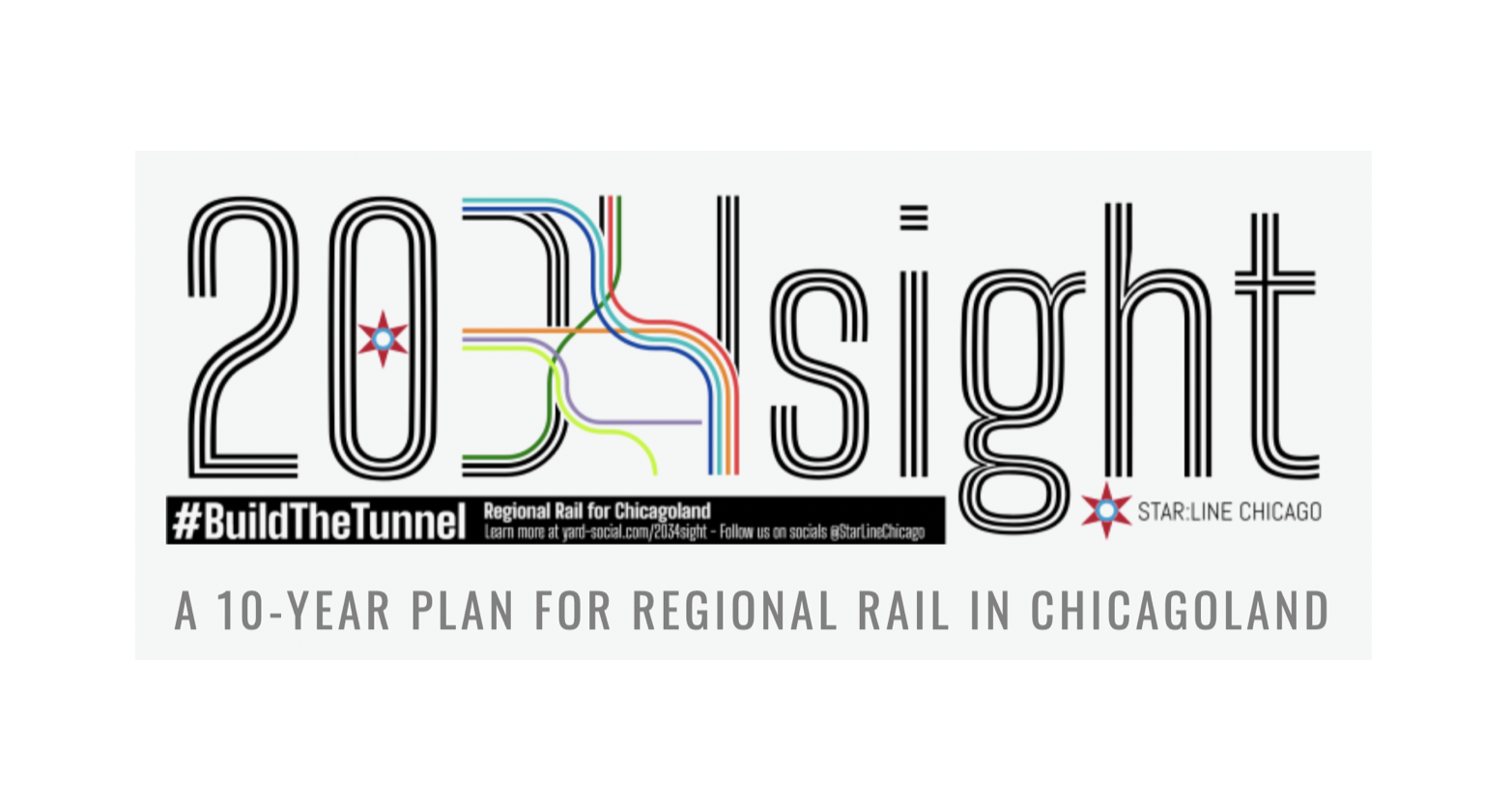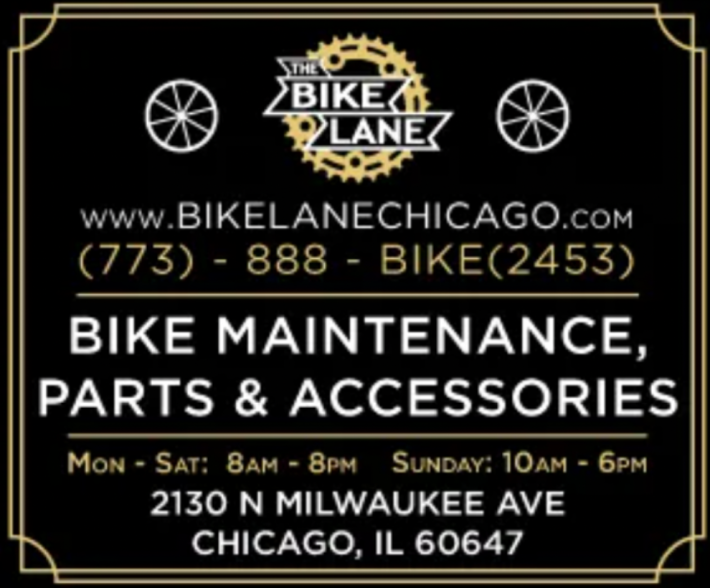
Star:Line Chicago, is a local public transportation advocate who prefers to remain anonymous. He has come up with a proposal to rejuvenate Chicagoland transit over the next ten years.
However, before we go any further, there are some caveats I should mention. When I reached out to Star:Line Chicago for an interview, he called his creation a "crayon sketch". That is to say, a personal, unprofessional rendering of what an improved network could theoretically look like, without engineering or budget constraints. He added that he is someone unaffiliated with the four local transportation agencies, and did this as a leisure exercise.
Still, Star:Line Chicago's scheme certainly merits consideration. This will be a brief rundown of what the three phases of his "2034sight Plan" entail. (That's "2034 Foresight," get it?) The proposal focuses on three types of train service. There's "Metropolitan Rail", "the un-portmanteau-ed version of Metra. "Rapid Transit" is the CTA 'L' network. And "CrossTowners" would be a hybrid of the two.
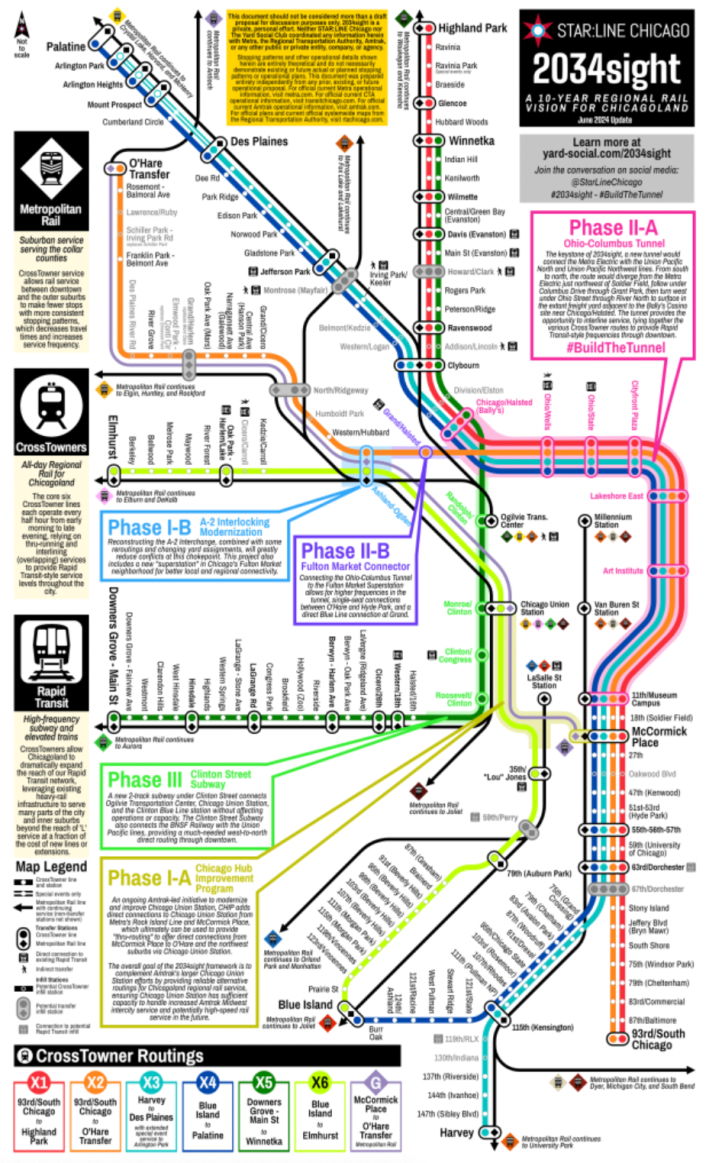
The first phase of the plan involves modifying Chicago Union Station, a key transportation hub and city landmark. "It is not as efficient or effective as it could be, due mostly to historical quirks," the Star:Line Chicago's website, The Yard Social Club states. "As a dual-stub station, trains generally can only go to — but not through — Chicago Union Station, and trains from the south need to take circuitous routings through Chicago to access the station. Additionally, from the north, trains must also pass through a busy at-grade interlocking junction known as A-2 near Western Avenue where trains heading to/from the Ogilvie Transportation Center must cross trains heading to/from Chicago Union Station."
To accomplish this, the 2034sight Plan would support two projects already underway. Metra has preliminarily discussed modifications to the A-2 interlocking junction while Amtrak is still seeking funding for its Chicago Hub Improvement Program (CHIP). The latter was being discussed back when ex-Mayor Lori Lightfoot was still in office. From there, Metra would build a "O’Hare Express" that would operate between Union Station and Metra's existing O’Hare Transfer station, served by its North Central Service line.
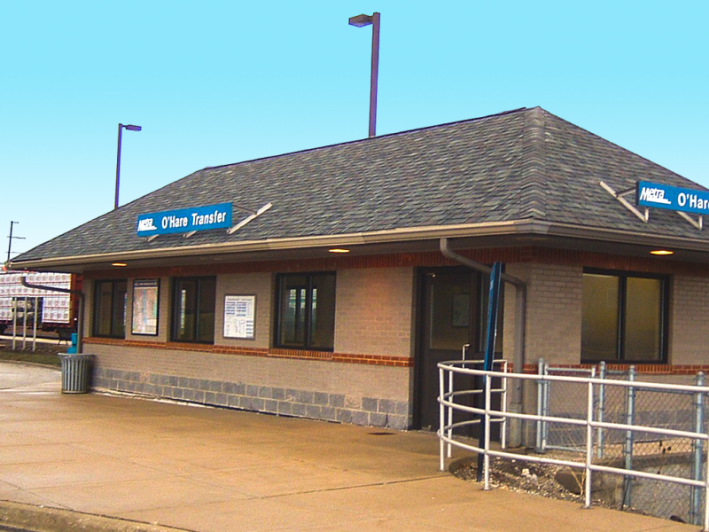
Phase II of the 2034sight Plan involves building an Ohio-Columbus Tunnel, an electrified two-track tunnel that would connect the Museum Campus, the future Bally’s Casino site at Chicago Avenue and Halsted Street, and the Fulton Market district. Doing so would create the first four of the previously mentioned CrossTowners routes. This would be the crux of the 2034sight Plan.
Phase III would tie it all together by building a second tunnel that would connect the BNSF Railway corridor to Aurora with the Ohio-Columbus Tunnel via the modified Chicago Union Station. That would create another CrossTowner route that would connect the west to the north. Another way to accomplish the same goal would be more aggressive renovation to Chicago Union Station as part of the CHIP initiative.

At this point, you might be wondering what a project of this size would cost. Star:Line Chicago has already worked that into his proposal. He estimates it would be $11.69 billion, though a successful federal grant application could cover up to 50 percent of the 2034sight Plan. Here are the potential benefits of the 2034sight Plan, as outline by Star:Line Chicago (his words):
- Regional rail allows Chicagoland to more efficiently use our existing rail network.
- Interlining provides Rapid Transit headways with Metropolitan Rail frequencies
- Separating suburban services between “inner” and “outer” zones speeds up trips for everyone.
- Good jobs for Chicagoland workers, and good transit to connect more Chicagolanders to more jobs throughout the region.
- Equity, with efficiency.
Star:Line Chicago acknowledges that the immediate priority for our region's transit network is an upcoming $730 million fiscal cliff. But he said the 2034sight Plan is "intended to be illustrative of how Chicagoland could potentially use existing infrastructure assets more efficiently outside of the current operating paradigms of our three transit agencies." However, he believe that now is still the kind to consider "strategic investments" such as this.
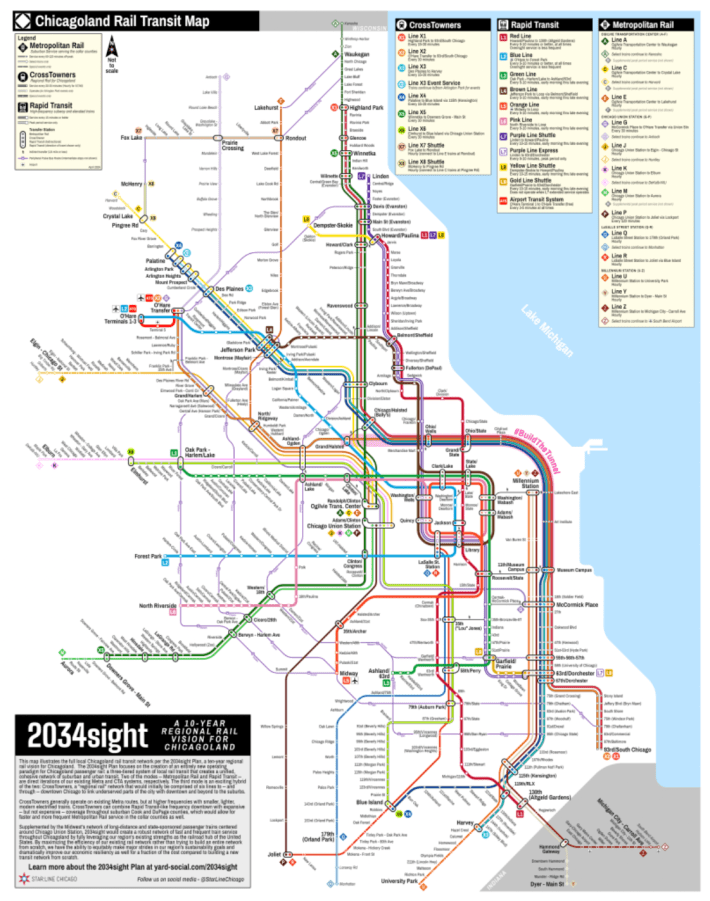
DePaul University transportation expert Joseph P. Schwieterman said he finds the 2034sight Plan's recommendations to be impressive from a technical standpoint. "It's unusual for a fairly new organization to have offer such rich detail supported by graphics." (I conducted this interview before learning that Star:Line Chicago is pretty much just one person.)
According to Star:Line Chicago, the 2034sight Plan is intended as a conversation starter. So, if you like what you read here or on his website, you can continue the conversation by contacting your local elected officials or by spreading the word online or in person.
Check out Star:Line Chicago's 20234sight Plan on The Yard Social Club website here.

Did you appreciate this post? Please consider making a tax-deductible donation, to help keep Streetsblog Chicago's sustainable transportation news and advocacy articles paywall-free.
